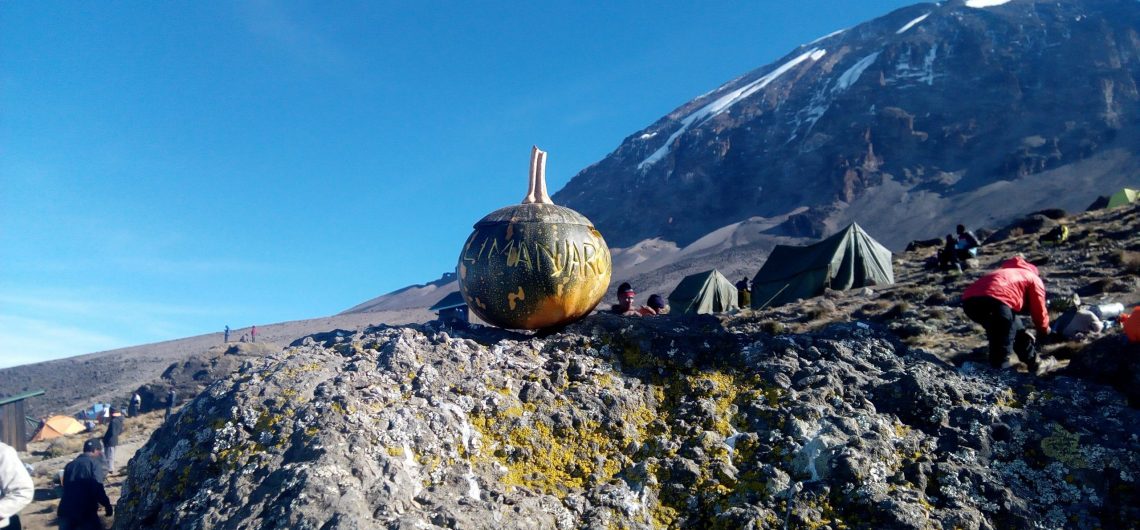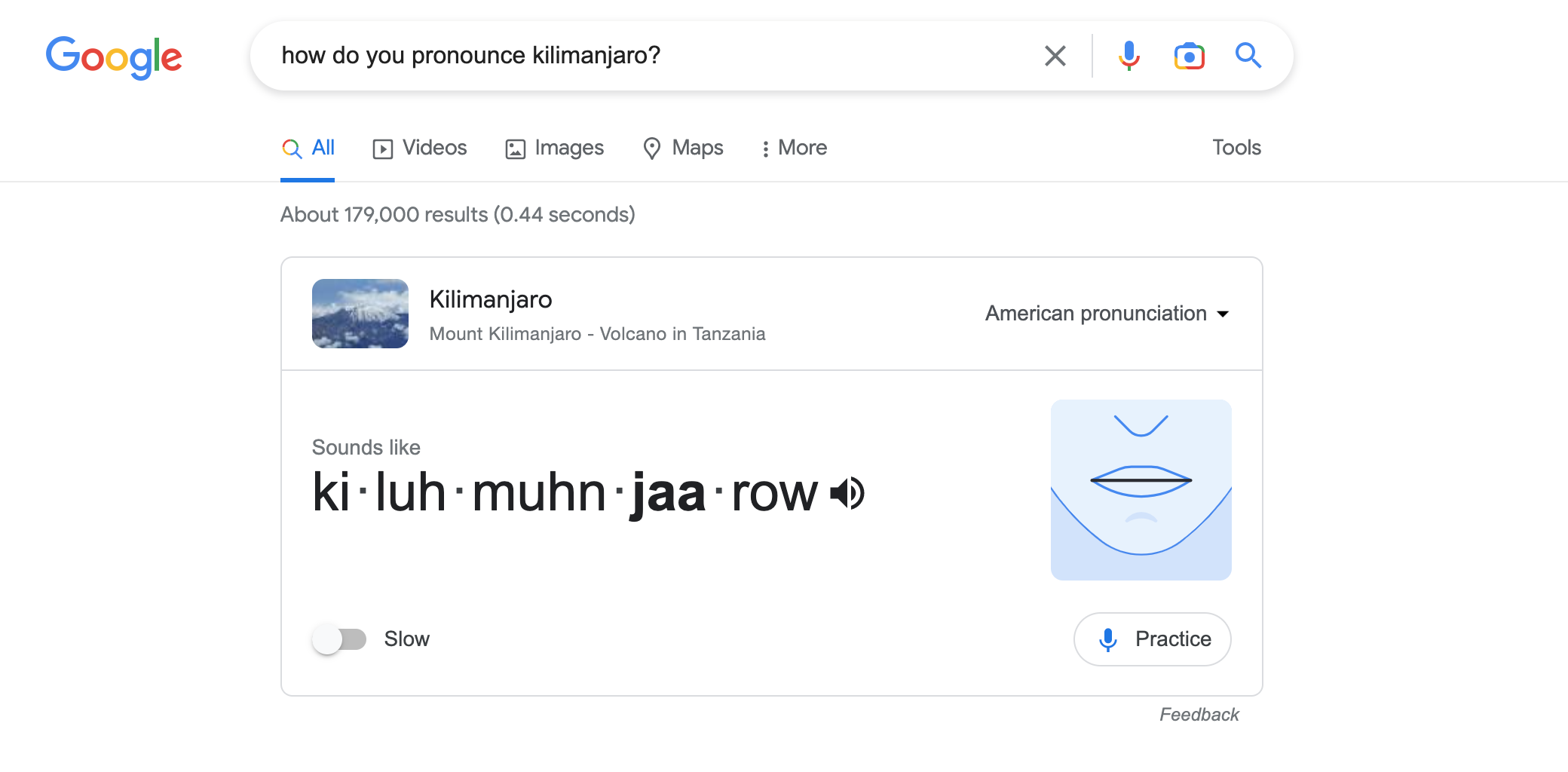Pronouncing Kilimanjaro (/ˌkɪlɪmənˈdʒɑːroʊ/) like other Swahili words is pretty basic, you just pronounce it just how you spell it. Some call is Kilamanjaro but the correct spelling is Kilimanjaro and not the other way around. But what does Kilimanjaro mean? Kilimanjaro has several different spellings, but what does it really mean?
Listen to the correct pronunciation of the word Kilimanjaro here.
Shakespeare once said, in the play Romeo and Juliet, “A rose by any other name, would smell as sweet.” and he was right because after all, what is in a name? Kilimanjaro looks more stunning than it is in the pictures. See our Mount Kilimanjaro photo gallery here.
You’ll find that there are various terminologies used to indicate the Kilimanjaro mountain when you Google or search the internet for it.
You might have heard it on the Jambo Bwana, hakuna matata song or from Disneys very own, Kilimanjaro safaris.
Why so many names? It is true that the majority of them contain spelling errors, such as Kilimandzaro, but in languages like Polish, this is how it is spoken. Check the video below and learn how to pronounce Kilimanjaro like the local guides.
It’s vital to consider how this mountain got its name and what it means given all the variants.
Is it Kilimanjaro or Kilamanjaro?
Kilamanjaro might sound nice to some of you but it is not the correct spelling of Mount Kilimanjaro, to be honest. Although Kilimanjaro is sometimes referred to as the Roof of Africa, it is unknown where the term Kilimanjaro originated.
By 1860, the early explorers were referring to this peak as Kilimanjaro, claiming that the name derives from a mountain in one of the local languages, Kiswahili.
The ancient Swahili people gave Kilimanjaro the name “mountain of glory,” with “Kilima” denoting mountain, according to Johann Ludwig Krapf, a German explorer who was among the first to reach the peak.
This derivation is said to have originated from the Europeans’ misunderstanding of the meaning of the Kiswahili terms “Kilima,” which means “hill,” and “Milima,” which means “mountain.”
Others have hypothesized that the name Kilimanjaro derives from a Kichagga tribe that used the words “kileme,” which means “defeat,” or “kilelema,” which refers to “difficulty” or “impossibility.”
Using the Kiswahili name component, the Germans dubbed this peak “Kilima-Ndscharo” in 1880 when they controlled Tanzania.
One of the first Europeans to climb Kibo, German geographer Hans Meyer gave the peak the name “Kaiser-Wilhelm-Spitze” (also known as “Kaiser-Wilhelm-Peak“).
When Tanzania became independent, the government chose to give the tallest peak the name UHURU, which stands for “Freedom.”
Therefore, keep in mind that Kilimanjaro’s meaning has a lengthy and complicated history whenever you encounter a humorous spelling of the mountain, such as Kilamanjaro or Killimanjaro.
 Spelling Kilimanjaro in other languages
Spelling Kilimanjaro in other languages
Mount Kilimanjaro has many different spellings around the world and trust me, it doesn’t sound too different in the different languages that we will look at below.
The French call it Kilimandjaro, the Germans call it Kilimandscharo. Meanwhile, in China, Mount Kilimanjaro is popularly known as 乞力马扎罗山-Qǐ or lì mǎzhá luó shān, the Greeks call it Kilimántzaro. In Japanese, Mount Kilimanjaro is spelled and pronounced, Kirimanjaro and in Greek, it is known as Kilimandzsáró. The Russians refer to Kilimanjaro as Kilimandzharo just like Ukrainians, almost resembling Hungarian’s Kilimandzsáró. In Italian, they call it Kilimangiaro but the coolest of them all is the Welsh who call it Mownt cilimanjaro.
![]()


 Spelling Kilimanjaro in other languages
Spelling Kilimanjaro in other languages
Comments